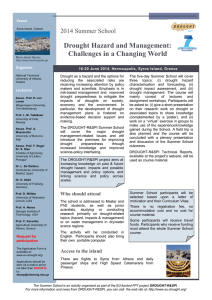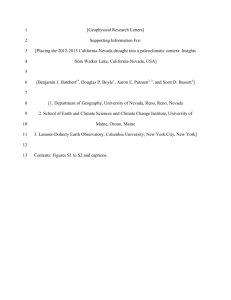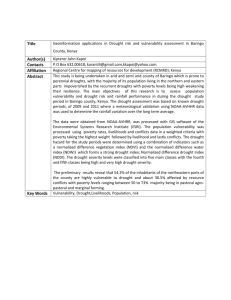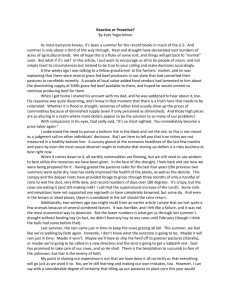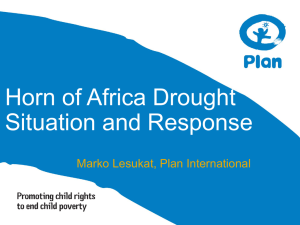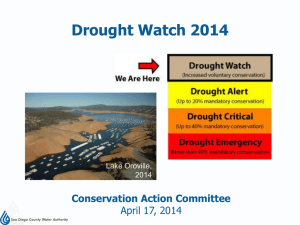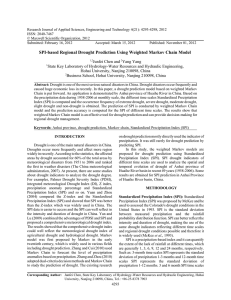gcb12777-sup-0005-DataS5
advertisement
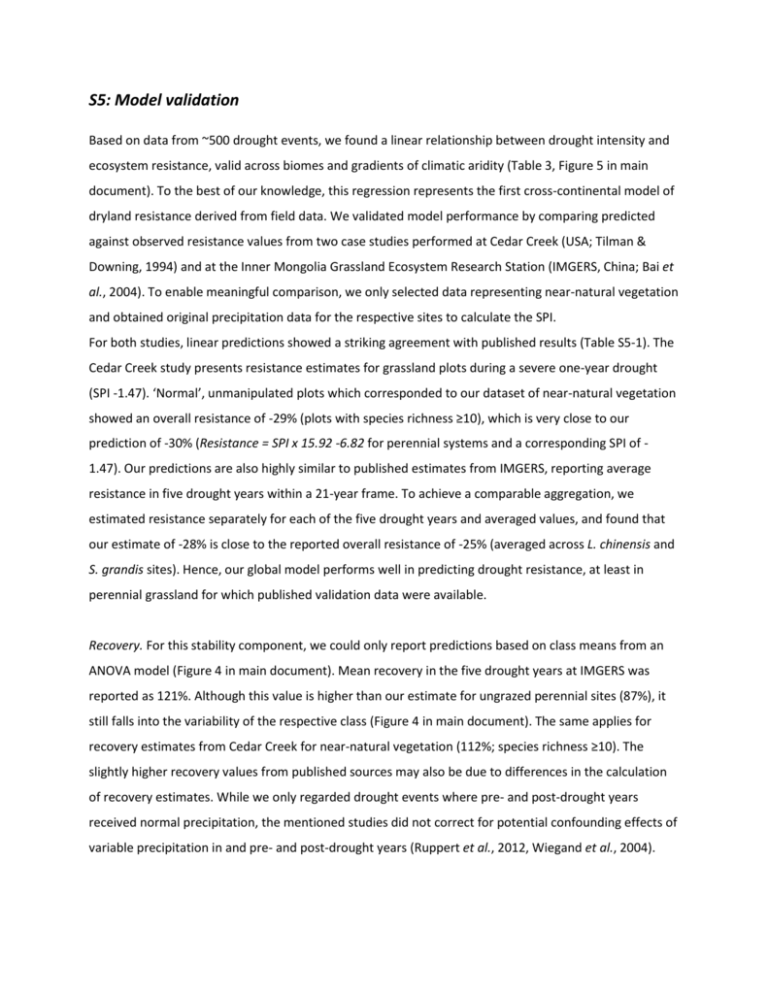
S5: Model validation Based on data from ~500 drought events, we found a linear relationship between drought intensity and ecosystem resistance, valid across biomes and gradients of climatic aridity (Table 3, Figure 5 in main document). To the best of our knowledge, this regression represents the first cross-continental model of dryland resistance derived from field data. We validated model performance by comparing predicted against observed resistance values from two case studies performed at Cedar Creek (USA; Tilman & Downing, 1994) and at the Inner Mongolia Grassland Ecosystem Research Station (IMGERS, China; Bai et al., 2004). To enable meaningful comparison, we only selected data representing near-natural vegetation and obtained original precipitation data for the respective sites to calculate the SPI. For both studies, linear predictions showed a striking agreement with published results (Table S5-1). The Cedar Creek study presents resistance estimates for grassland plots during a severe one-year drought (SPI -1.47). ‘Normal’, unmanipulated plots which corresponded to our dataset of near-natural vegetation showed an overall resistance of -29% (plots with species richness ≥10), which is very close to our prediction of -30% (Resistance = SPI x 15.92 -6.82 for perennial systems and a corresponding SPI of 1.47). Our predictions are also highly similar to published estimates from IMGERS, reporting average resistance in five drought years within a 21-year frame. To achieve a comparable aggregation, we estimated resistance separately for each of the five drought years and averaged values, and found that our estimate of -28% is close to the reported overall resistance of -25% (averaged across L. chinensis and S. grandis sites). Hence, our global model performs well in predicting drought resistance, at least in perennial grassland for which published validation data were available. Recovery. For this stability component, we could only report predictions based on class means from an ANOVA model (Figure 4 in main document). Mean recovery in the five drought years at IMGERS was reported as 121%. Although this value is higher than our estimate for ungrazed perennial sites (87%), it still falls into the variability of the respective class (Figure 4 in main document). The same applies for recovery estimates from Cedar Creek for near-natural vegetation (112%; species richness ≥10). The slightly higher recovery values from published sources may also be due to differences in the calculation of recovery estimates. While we only regarded drought events where pre- and post-drought years received normal precipitation, the mentioned studies did not correct for potential confounding effects of variable precipitation in and pre- and post-drought years (Ruppert et al., 2012, Wiegand et al., 2004). Table S5-1: Overview on resistance model-validation. SPI and predicted vs. observed resistance values at Cedar Creek and IMGERS are given for the respective drought year(s) or averaged across drought years, respectively. Site Year of SPI Drought Resistance (%) predicted Cedar Creek 1988 -1,47 -30,2 IMGERS 1980 -2,17 -41,4 1983 -1,34 -28,2 1987 -1,49 -30,5 1995 -1,12 -24,6 2000 -0,65 -17,1 observed A -29,0 observed B - Ø -28,3 -27,0 -22,0 For Cedar Creek observed A relates to species rich (≥10; cf. Tilman & Downing, 1994). For IMGERS, observed A & B relate to Leymus chinensis and Stipa grandis dominated sites, respectively. At IMGERS (Bai et al., 2004) only averaged observations where available. References Bai Y, Han X, Wu J, Chen Z, Li L (2004) Ecosystem stability and compensatory effects in the Inner Mongolia grassland. Nature, 431, 181-184. Ruppert JC, Holm AM, Miehe S, Muldavin E, Snyman HA, Wesche K, Linstädter A (2012) Meta-analysis of rain-use efficiency confirms indicative value for degradation and supports non-linear response along precipitation gradients in drylands. Journal of Vegetation Science, 23, 1035-1050. Tilman D, Downing JA (1994) Biodiversity and stability in grasslands. Nature, 367, 363-365. Wiegand T, Snyman HA, Kellner K, Paruelo JM (2004) Do grasslands have a memory: Modeling phytomass production of a semiarid South African grassland. Ecosystems, 7, 243-258.
